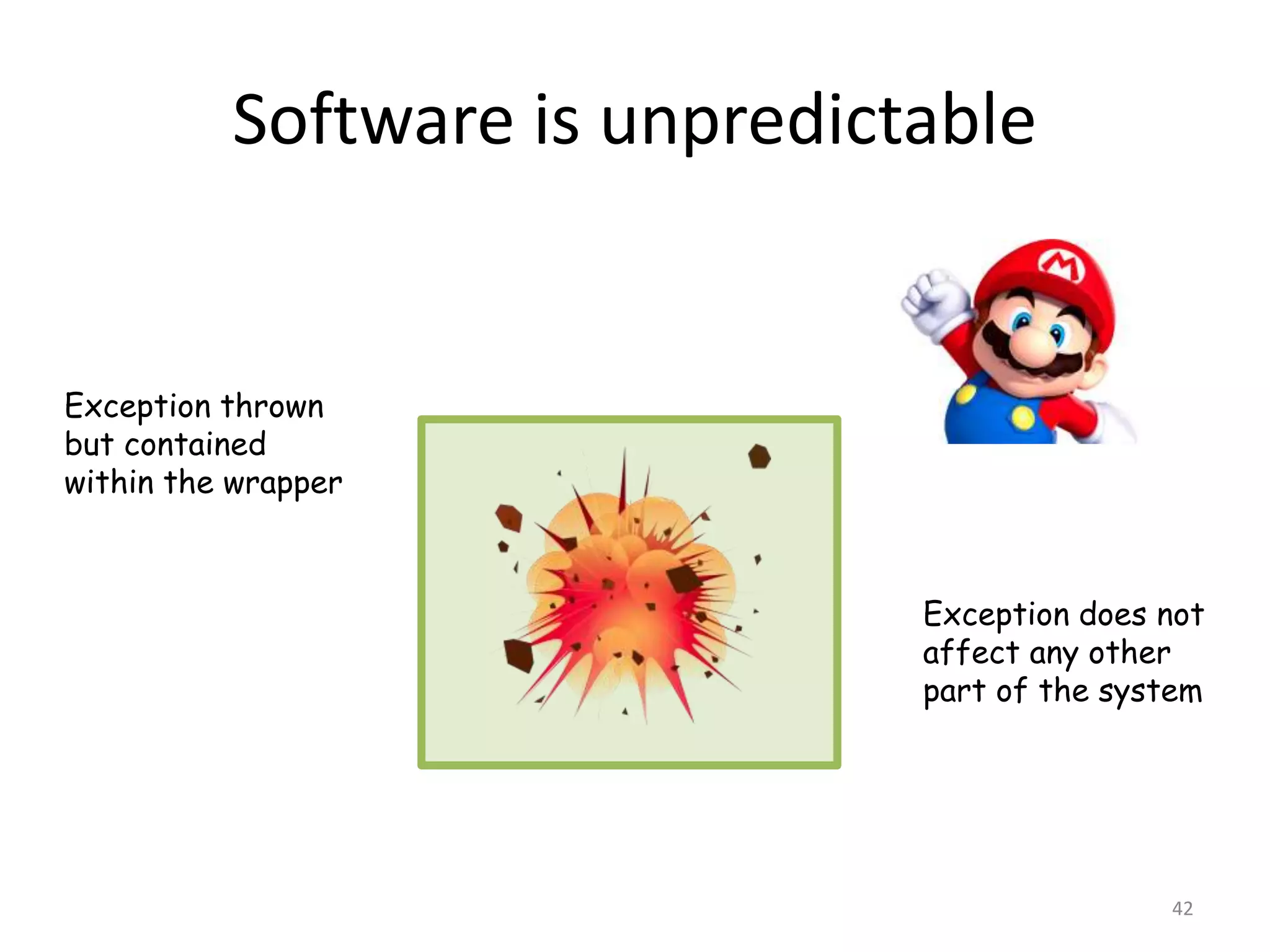The document explains functional programming (FP) principles using JavaScript, emphasizing the benefits of reducing complexity, improving code modularity, and making debugging easier. It highlights key features of JavaScript that support FP, such as closures and higher-order functions, and details concepts like currying, composition, and monads for managing data and errors. By adopting FP, developers can create more efficient, testable, and maintainable applications.















![var addToTable = compose(
appendToTable(’personTable'),
populateRow,
props(['ssn', 'firstname', lastname']),
findPerson,
normalize,
trim);
addToTable(personId);
16](https://image.slidesharecdn.com/fpjsluisatenciolatest-160208200127/75/Thinking-Functionally-with-JavaScript-16-2048.jpg)

![Side effects
doWork doMoreWork
sharedData = [...]
depends on updatechanges
coupling
1 2
order matters](https://image.slidesharecdn.com/fpjsluisatenciolatest-160208200127/75/Thinking-Functionally-with-JavaScript-18-2048.jpg)







![Currying Example
var name = curry2(function (first, last) {
return [last, first].join(',');
});
name('Haskell'); //-> Function
name('Haskell')('Curry'); //-> 'Curry, Haskell'](https://image.slidesharecdn.com/fpjsluisatenciolatest-160208200127/75/Thinking-Functionally-with-JavaScript-26-2048.jpg)








![const addToTable = compose(
appendToTable('personTable'),
populateRow,
props(['ssn','firstname’,'lastname']),
findPerson,
normalize,
trim);
addToTable(personId);
35
Functional programming](https://image.slidesharecdn.com/fpjsluisatenciolatest-160208200127/75/Thinking-Functionally-with-JavaScript-35-2048.jpg)



















![To Functional
const addToTable = compose(
appendToTable('personTable'),
populateRow,
props(['ssn','firstname','lastname']),
findPerson,
normalize,
trim);
addToTable('444-44-4444'); //-> Maybe(Student)
addToTable('xxx-xx-xxxx'); //-> Maybe(null)
addToTable('xxx-xx-xxxx').orElse(
console.log('Error adding student');
);
55](https://image.slidesharecdn.com/fpjsluisatenciolatest-160208200127/75/Thinking-Functionally-with-JavaScript-55-2048.jpg)






